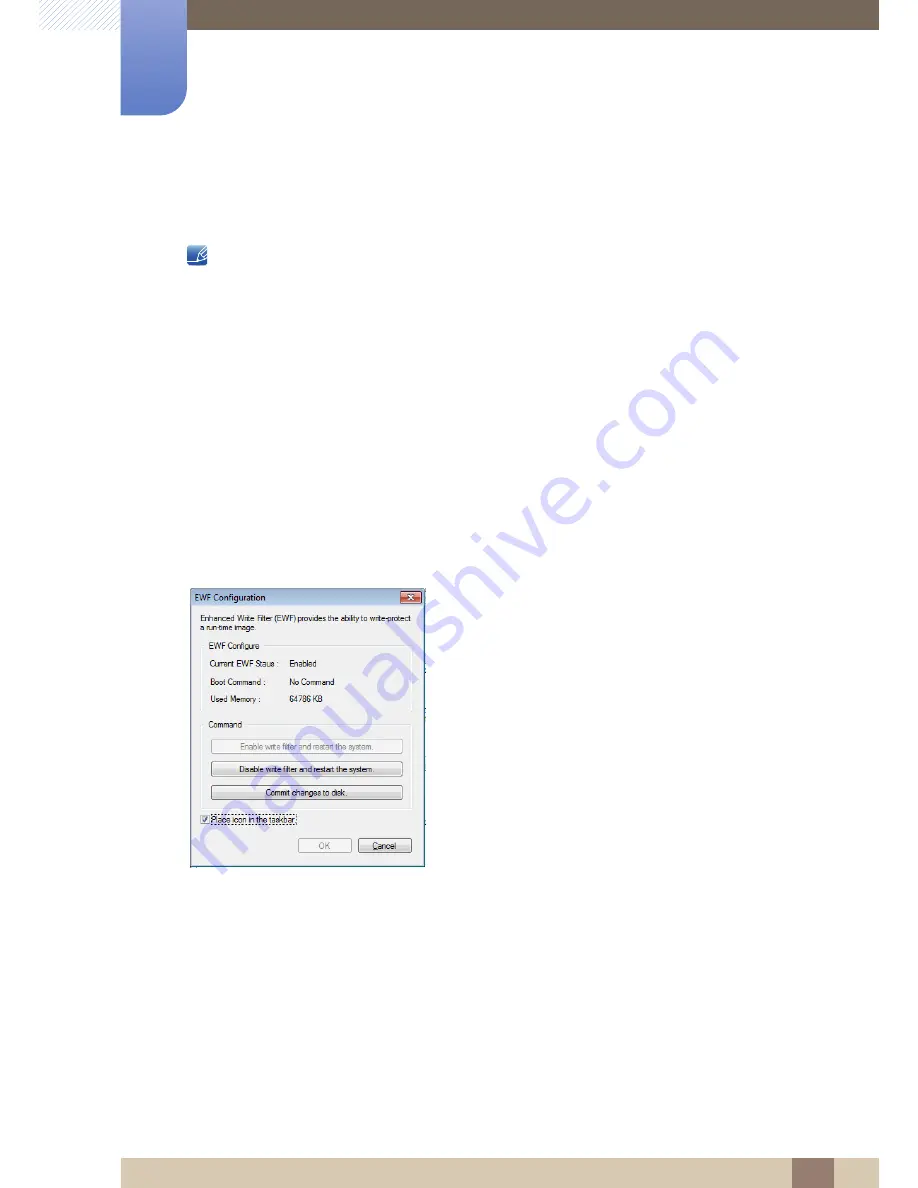
34
Using "Windows Embedded Standard 7" (TX-
WN)
2
2 Using "Windows Embedded Standard 7" (TX-WN)
Internet Explorer
A
WES
Client includes
Internet Explorer
. This program is permitted for all users.
Microsoft
website.
For more information on Internet Explorer, visit the Microsoft website.
Enhanced Write Filter (EWF)
Enhanced Write Filter (EWF)
protects a flash volume from write access and consequently, preserves
the durability of the flash device.
EWF
provides read and write access through a cache to the client
instead of allowing direct access to a flash volume.
If
EWF
is activated, data is not stored to the flash. The data stored in the cache is only effective while the
client is operating. The cached data will be lost when restarting or shutting down your client. Therefore, to
store the data written to the registry, favorites and cookie folders, etc., the content stored in the cache
should be transferred to the flash. An error message is displayed when it is not possible to write to the
cache due to a lack of memory. If this message is displayed, you have to deactivate
EWF
to flush the
EWF
cache. The user can double-click the
EWF
icon on the tray at the bottom right of the screen to call
the
EWF
Manager. A user can also change the
EWF
configuration by entering
EWF
management
commands at the command prompt. This task requires the
Administrator
privilege.
z
Enable write filter and restart the system.
If the
EWF
is disabled, enable it. If this item is selected, the cache is flushed and the
EWF
is enabled.
After restarting your computer, the configurations and file system information for the client are written
to a cache. You can also perform this operation by entering “
ewfmgr.exe c: -enable
” at the
command prompt and restarting your computer.
z
Disable write filter and restart the systems.
This item is activated when the
EWF
is running. If this item is selected, the current states of the client
(saved in a cache) are saved to a flash volume and the
EWF
is disabled. After restarting your
computer, the configurations and file system information for the client are written to a flash volume.
















































